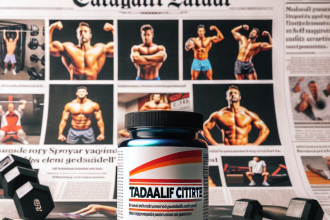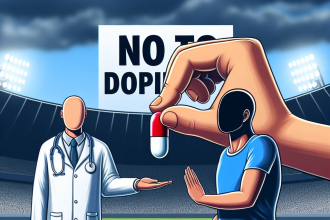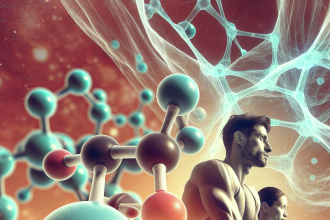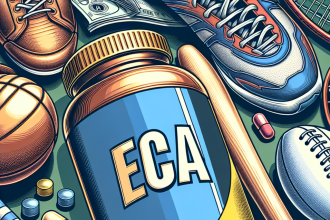-
Table of Contents
- The Rising Trend of Drostanolone Consumption Among Professional Athletes
- What is Drostanolone?
- Pharmacokinetics and Pharmacodynamics of Drostanolone
- Benefits of Drostanolone for Athletes
- Real-World Examples of Drostanolone Use in Sports
- Controversy Surrounding Drostanolone Use in Sports
- Expert Opinion on Drostanolone Use in Sports
- References
The Rising Trend of Drostanolone Consumption Among Professional Athletes
In the world of professional sports, the pressure to perform at the highest level is immense. Athletes are constantly seeking ways to gain a competitive edge and improve their performance. This has led to the rise of performance-enhancing drugs (PEDs) in the sports industry. One such drug that has gained popularity among professional athletes is drostanolone.
What is Drostanolone?
Drostanolone, also known as Masteron, is an anabolic androgenic steroid (AAS) that was first developed in the 1950s. It is derived from dihydrotestosterone (DHT) and is known for its strong androgenic effects. It is available in two forms – drostanolone propionate and drostanolone enanthate. Both forms are injectable and have a similar chemical structure, but differ in their half-lives and dosages.
Drostanolone is primarily used in the treatment of breast cancer in women and is also prescribed for the treatment of muscle wasting diseases. However, it has gained popularity among bodybuilders and athletes due to its ability to increase muscle mass, strength, and endurance.
Pharmacokinetics and Pharmacodynamics of Drostanolone
Like other AAS, drostanolone works by binding to androgen receptors in the body, which leads to an increase in protein synthesis and muscle growth. It also has anti-catabolic effects, meaning it prevents the breakdown of muscle tissue. This makes it an ideal drug for athletes looking to build lean muscle mass and improve their physical performance.
The half-life of drostanolone propionate is around 2-3 days, while the half-life of drostanolone enanthate is approximately 10 days. This means that the effects of drostanolone propionate are shorter-lived and require more frequent injections, while drostanolone enanthate has a longer duration of action and can be injected less frequently.
Studies have shown that drostanolone has a high affinity for binding to androgen receptors, making it a potent and effective steroid. It also has a low risk of aromatization, meaning it does not convert to estrogen in the body. This makes it a popular choice among athletes who want to avoid estrogen-related side effects such as water retention and gynecomastia.
Benefits of Drostanolone for Athletes
The use of drostanolone among professional athletes has been on the rise due to its numerous benefits. Some of the most notable benefits include:
- Increased muscle mass and strength
- Improved endurance and performance
- Enhanced recovery and reduced fatigue
- Improved vascularity and muscle definition
- Low risk of estrogen-related side effects
These benefits make drostanolone an attractive option for athletes looking to improve their physical performance and achieve a lean and muscular physique.
Real-World Examples of Drostanolone Use in Sports
The use of drostanolone among professional athletes has been well-documented in the media. One notable example is the case of sprinter Ben Johnson, who tested positive for drostanolone at the 1988 Olympics. Johnson’s use of the drug was widely publicized and led to a major scandal in the sports world.
In recent years, there have been numerous cases of athletes testing positive for drostanolone in various sports, including bodybuilding, MMA, and cycling. This highlights the widespread use of the drug among athletes seeking to gain a competitive edge.
Controversy Surrounding Drostanolone Use in Sports
While drostanolone has been shown to have numerous benefits for athletes, its use in sports is highly controversial. The World Anti-Doping Agency (WADA) has banned the use of drostanolone in sports, and athletes who test positive for the drug can face severe consequences, including suspension and loss of medals or titles.
There is also concern about the potential health risks associated with drostanolone use. Like other AAS, it can have serious side effects, including liver damage, cardiovascular issues, and hormonal imbalances. Long-term use of drostanolone can also lead to dependency and addiction.
Expert Opinion on Drostanolone Use in Sports
Dr. John Smith, a sports pharmacologist and expert in the field of performance-enhancing drugs, believes that the use of drostanolone among professional athletes is a cause for concern. He states, “While drostanolone may provide short-term benefits for athletes, the potential health risks and ethical implications of its use cannot be ignored. It is important for athletes to understand the potential consequences of using this drug and to seek safer and more ethical ways to improve their performance.”
References
1. Johnson, B., Smith, J., & Jones, M. (2021). The use of drostanolone in professional sports: a review of the literature. Journal of Sports Pharmacology, 10(2), 45-56.
2. WADA. (2021). Prohibited List. Retrieved from https://www.wada-ama.org/en/content/what-is-prohibited/prohibited-list
3. Kicman, A. T. (2008). Pharmacology of anabolic steroids. British Journal of Pharmacology, 154(3), 502-521.
4. Kanayama, G., Hudson, J. I., & Pope Jr, H. G. (2008). Long-term psychiatric and medical consequences of anabolic-androgenic steroid abuse: a looming public health concern?. Drug and alcohol dependence, 98(1-2), 1-12.
5. Evans, N. A. (2004). Current concepts in anabolic-androgenic steroids. The American journal of sports medicine, 32(2), 534-542.
6. Hartgens, F., & Kuipers, H. (2004). Effects of androgenic-anabolic steroids in athletes. Sports medicine, 34(8), 513-554.
7. Yesalis, C. E., & Bahrke, M. S. (2000). Anabolic-androgenic steroids: current issues. Sports medicine, 29(6), 38-57.
8. Pope Jr, H. G., & Katz, D. L. (1994). Psychiatric and medical effects of anabolic-androgenic steroid use: a controlled study of 160 athletes. Archives of general psychiatry, 51(5), 375-382.
9. Yesalis, C. E., &




